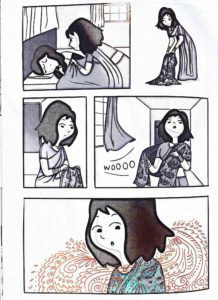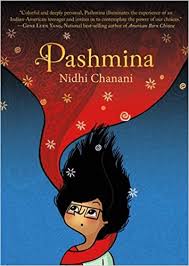** Contact us if you would like Literary Fusions to come to your campus with engaging, evidence-based, and practical professional development **
This book was unanimously recommended by The Texas Library Association on their 2017 Maverick book list (for grades 6-12). Let’s face it, most students love graphic novels. One of the most repeated questions I get as I travel from school to school is, “How can I get the students to stop reading Captain Underpants and Big Nate?” They never fully like my answer. It is usually something like, “Why would you? Captain Underpants is HILARIOUS and the kids are enjoying reading.” That being said, I understand educators wanting students to gain more from reading than how to change their name to Poopsie Gizzardfanny. (FYI that really is my new name, check yours here: https://www.cs.drexel.edu/~introcs/F2K/lectures/PoopyPants/) See! Fun! Now, since students enjoy graphic novels, try giving them other graphic novels with some substance. To find these great books, go to the TxLA Maverick list and start there! (They also have a Little Maverick list for grades K-5.)
I started with Pashmina because it was unanimously voted in and I love multicultural books!
Why I Finished It:
I finished it while my son was in his Kumon math class. Truth. It’s beautiful, genuine, and relatable. I couldn’t put it down and secretly hoped he would stay in class long enough so I could finish it. And then, I read it again that night. This is the story of Priyanka, American by birth with Indian heritage. She has the same struggles of all American teenagers at school such as dealing with bullies, not having the right clothes, and just not having enough money. The main difference for Pri (as she likes to be called) is that she has the idea that her life might be better in India. She wants to know about her father, but her mother refuses to share information. She wants to know about India and why her mother ever left, but her mother only states that they treat women unfairly and it is not safe. A magical pashmina provides insight into her background and Priyanka refuses to give up her internal identity struggle and requests to visit India and stay her Aunt. While in India she learns about her heritage, different cultural views of roles of women, and about her past.
Who I Would Give It To:
Fourth-grade teachers and up! This is not a difficult read, but it is powerful. There is so much you can discuss and learn from this enchanting story.
Integration Ideas:
Activate Prior Knowledge (schema)
Before beginning this book, have students conduct informal research on family roles in various cultures. Have them research India and the United States for sure, but then have them choose two other cultures. Students should discuss what they have learned with classmates. Also, have them share connections they are making to this new information. These connections could be from television, reading, or family friends. Many times misconceptions will be shared, take this time to make sure that there are facts and there are stereotypes and it’s important to be aware of the difference.
Themes
As with all texts, there are various themes present in this book. Here is a couple I pulled out:

Identity (specifically cultural identity) – In this story, Pri is trying to find her identity. She’s trying to figure out her history and what that means for her as an Indian-American. An essential question for students as they read: how does your identity shape your beliefs?

Gender Roles – This book has a very feminist undertone to it. It definitely shares how women are treated differently in different countries and bring forth a poignant topic and way to think through current events. An essential question for students as they read: How does gender affect your experiences and personal identity?
Graphic Novels
 Artwork – Have the students analyze the art in this graphic novel. Did the author/illustrator choose realistic drawings or more cartoon drawings? How did that impact the novel? For this story, have students focus on the use of color. They will notice the muted colors throughout until the magical pashmina is being worn. When the pashmina is on, the book is full of vibrant colors. Ask students: what is the impact of the use of color? Why did the author choose to set up the pages this way? Was the use of color effective?
Artwork – Have the students analyze the art in this graphic novel. Did the author/illustrator choose realistic drawings or more cartoon drawings? How did that impact the novel? For this story, have students focus on the use of color. They will notice the muted colors throughout until the magical pashmina is being worn. When the pashmina is on, the book is full of vibrant colors. Ask students: what is the impact of the use of color? Why did the author choose to set up the pages this way? Was the use of color effective?
Words and Art – Ask students to discuss how effective this story would be if it wasn’t in Graphic Novel form. Would it be more difficult to understand and visualize? How did the author handle the use of foreign words? Ask the students if they were able to understand the meaning of the words from the context of the story, the pictures, or both.
For an interesting comparison, check out The Invention of Hugo Cabret, which is told in both words and pictures or Wonderstruck, which tells two stories simultaneous – one in images, one in text (both books by Brian Selznick).
Websites to Checkout –
- No Flying No Tights – reviews Graphic Novels with a lot of filters for you to pinpoint your need.
- Reading Rockets Case for Graphic Novels – reasons why graphic novels are good for students, booklists, and various websites to help teach graphic novels.
Sincerely,
Mrs. Gizzardfanny
How will you use Pashmina in your classroom?







Leave a Reply